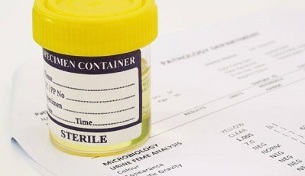If we transfer the concept of the Achilles' heel to the sexual sphere of the representatives of the strong half of humanity, the prostate will play its role. An acute or chronic form of inflammation is always a health hazard, and the causes of prostatitis in men are so diverse that treating the disease is not easy. Despite the advances in medicine, genitourinary pathology remains one of the most common, in addition, the disease is becoming "younger". In order to properly diagnose it, you need to know what causes prostatitis.
What is prostatitis?
The term used for an exclusively male disease is based on two concepts: prostate (Latin for "prostate") and (from Latin for "inflammation"). Prostatitis is an andrological pathology in the form of an inflammatory process that occurs in the area of the prostate. For a number of reasons, the "second heart" in the male body no longer fulfills its functions and threatens the occurrence of unpleasant phenomena such as suppuration, loss of libido, ejaculation disorders and infertility.
What causes prostatitis in men

Age is not included in the list of factors that cause the appearance of pathology in men. The actual statistics are unknown and the registered cases, taking into account the correct diagnosis, show that around 35% of young men between the ages of 30 and 40 are faced with such a diagnosis.
Other causes of prostatitis in young and mature men are seen as more important and threatening:
- infections (urogenital, sexually transmitted infections) or tonsillitis;
- sedentary lifestyle;
- circulatory disorders (stagnation of venous blood);
- interrupted traffic;
- prolonged abstinence;
- hypothermia;
- hormonal imbalance;
- constipation;
- overeating;
- constant stress.
For young men
Extremely active sexual activity as well as prolonged abstinence or irregular intercourse can cause prostatitis in young men. The course of urological pathology in them is characteristic in an acute form, and the most common cause is sexually transmitted infection. Gonorrhea, trichomoniasis, and chlamydia cause acute prostatitis in young men, which is based on possible structural disorders of the prostate tissue.
Causes of chronic prostatitis in men
If bacteria and other pathogens of infectious inflammation can provoke the appearance of an acute form of urological pathology, then other factors can cause chronic diseases. The danger of this variant of prostatitis lies in the long and often asymptomatic course of the disease. It is not possible to immediately identify the characteristic signs, and since the disease regularly worsens, men prefer not to contact a specialist. The inflammatory process continues to develop, and the following factors can contribute to the occurrence of chronic prostatitis:
- Lift weights with a full bladder;
- anatomical disorders;
- injuries;
- bacterial infection of other organs.
Causes of the acute form

When an infection enters the body through the external genitalia, the result of the activity of bacteria is inflammation of the tissues of the prostate. The acute process is clinically pronounced, so problems rarely arise when diagnosing prostatitis in men.
To avoid uncomfortable sensations that can affect potency, it is helpful to know the main causes of acute prostatitis in men, including the following:
- infectious pathogens (streptococci, staphylococci, trichomonas, chlamydia, Escherichia coli);
- promiscuity in sexual relationships;
- using a urethral catheter;
- instrumental intervention in the study of the area of the urethra;
- hypothermia;
- congestion, circulatory disorders.
Infectious inflammation
The causes of prostatitis in men are naturally different, and the most common is the action of pathogens. One type of bacteria can provoke the development of a pathology after sexual intercourse, while the other can contribute to the appearance of urethritis, pyelonephritis, and cystitis. Infectious agents enter the prostate through the urethra or rectum. Timely examination can reveal the presence of Klebsiella, enterococci, Trichomonas, and other types of bacteria that cause prostatitis.
congestion in the prostate
This type of prostatitis is more common in mature men, while younger men are less likely to get sick. The pathology is difficult to identify, so over time it becomes chronic. The situation is exacerbated by the fact that the symptoms of this form of prostatitis in men may be completely absent and only a burning sensation in the perineum, a slight pain that radiates to the inner thigh after a long walk, not due to the presence of a urological onemay indicate infectious pathology. What factors lead to stagnation of venous blood in the small pelvis?

The main causes of prostatitis in men are:
- sedentary work;
- minimal activity in sexual relationships or their termination;
- Hypothermia of the pelvic organs, of the whole body;
- hormonal disorders;
- inflammatory processes in the genitourinary system, pelvic organs, rectum;
- varicose veins and other diseases associated with impaired outflow of venous blood;
- constipation.
Congenital abnormalities can be the cause of the stagnation of venous blood and secretions, which lead to prostatitis in men. Violation of the structure of the gland can reduce libido or inhibit sexual activity. The special hormones responsible for erection are not produced in sufficient quantities, which makes ejaculation difficult. A special secret accumulates in the ducts of the gland, and since ejaculation in a person is disturbed and there is no complete emptying of the ducts, the stagnant phenomenon proceeds.
Reasons acquired
The urological disease itself cannot be transmitted. However, medical practice proves that there is a risk: during sexual intercourse, infectious agents can penetrate the tissues, and then bacteria get into the prostate and cause inflammation.
The following factors make up a group of acquired causes of prostatitis:
- Perineal trauma, which can be followed by the development of a chronic inflammatory process, damage to the prostate vessels or impairment of erectile function.
- Narrowing of the urinary canal, which leads to impaired urine flow and increased pressure in the urethra.
- Inflammatory process in the genitourinary system (urethritis) when an infection penetrates the prostate tissue.
- prostate stones.
- The negative effects of professional activities.
Prostatitis diagnostics
Only on the basis of the result of a comprehensive examination can a urologist make a correct diagnosis for a patient. To determine the nature and form of the disease, the doctor will take a medical history and conduct a general and urological examination. To understand the clinical picture and what can cause unpleasant symptoms, a specialist conducts a rectal examination of the prostate, a painful procedure, but it is extremely necessary.

Regular visits to the urologist can avoid some diagnostic procedures.
The main complex of studies that allows the diagnosis of prostatitis in men includes the following activities:
- general urinalysis;
- prostate secretion analysis;
- ejaculate examination;
- urethral swab;
- ultrasound of the prostate;
- computed tomography of the pelvic organs;
- biopsy.
Prostatitis treatment
A doctor can only recommend the treatment of urological diseases after performing diagnostic measures. In order not to cause serious complications or to delay the treatment of prostatitis, it makes sense for the patient to use the tactics chosen by the specialist. It is also important to follow the recommendations. The method of therapy for prostatitis in men depends on the type of inflammatory process: infectious or non-infectious in nature.
The general treatment regimen for the disease is as follows:
- Antibacterial therapy.Taking antibiotics of the fluoroquinolone group, with their unique properties, tops the list of drugs that can complicate and prevent the further development of prostatitis in men. Sometimes macrolide group drugs can be prescribed and anti-inflammatory (nonsteroidal) drugs help relieve pain.
- Physiotherapy.Each method aims to improve blood circulation. Methods such as magnet and laser therapy, electrophoresis and therapeutic baths are used for this purpose.
- massage.This is the most effective post-medication treatment for treating inflammation. If a specialist touches this area, pain cannot be avoided, but massage will help significantly speed up recovery, remove pus and improve the effects of antibiotics.
- Immunomodulatory therapy.Measures and means of correcting the state of the immune system are necessary for a full recovery. Vitamins, fortifying drugs help restore immunity, maintain and improve well-being, so that strength seems to fight an unpleasant disease and the causes of prostatitis.
- folk remedies, prevention.These instructions are used as additional instructions at the stage when it was possible to manage the main symptoms of prostatitis in men. Herbal teas, candles and other recipes based on the gifts of nature should be used after consulting a specialist. It is also useful for the patient to revise the diet, increase the proportion of natural products, avoid alcohol, exercise regularly, and avoid nervous overexertion.
























